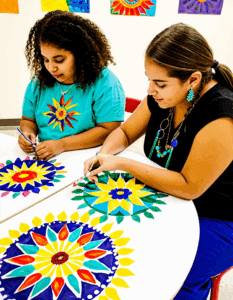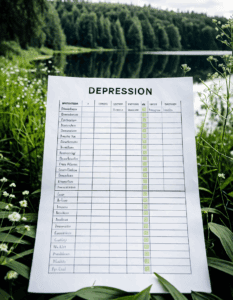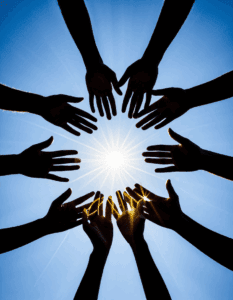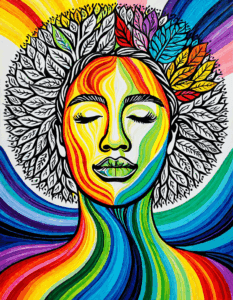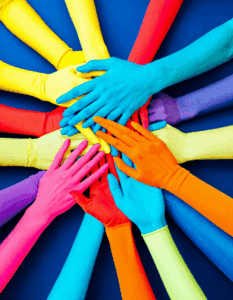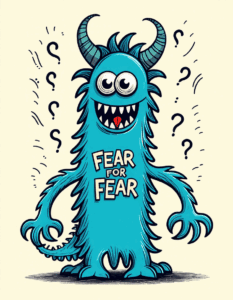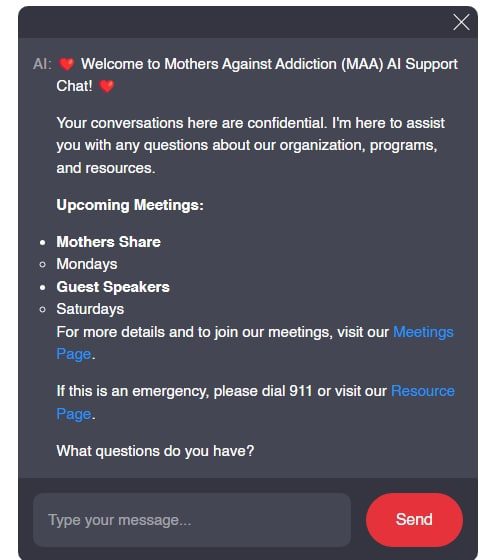Understanding LGBTQ+ Addiction Issues in 2024
The struggle with LGBTQ+ addiction issues in 2024 is both an uphill battle and a call to action. These issues are shaped by the persistent stigma that LGBTQ+ individuals face, despite societal progress. Recent research underscores the gravity of the situation: LGBTQ+ individuals have significantly higher rates of substance use disorders than their heterosexual peers. According to the National Institute on Drug Abuse (NIDA), approximately 20-30% of the LGBTQ+ community struggle with addiction, contrasting sharply with the 9% rate among the general population. This chilling disparity begs for compassion, understanding, and immediate intervention.
The Intersection of Identity and Substance Abuse: Current Statistics and Research
LGBTQ+ addiction issues are deeply intertwined with identity, social environments, and personal experiences. In 2024, data from NIDA reveals that discrimination, violence, and a lack of resources compound the problem. LGBTQ+ individuals are more likely to be victims of discrimination, sexism, and violence, which exacerbates their susceptibility to substance abuse. Without sufficient support and resources for mental health, addiction becomes an increasingly severe issue. The pressing question remains: How can we address these disparities?
| **Category** | **Details** |
|---|---|
| Prevalence of Addiction | LGBTQ+ individuals are 2-3 times more likely to struggle with substance use disorders compared to their heterosexual counterparts. |
| Contributing Factors | – Discrimination and Stigma: Higher rates of discrimination, sexism, and violence. |
| – Mental Health Stressors: Increased rates of depression, anxiety, and other mental health issues due to societal pressure and marginalization. | |
| – Lack of Support: Limited access to LGBTQ+-friendly healthcare and mental health services. | |
| Substance Use Trends | – Higher usage rates of alcohol, tobacco, marijuana, and other substances. |
| – Increased risk of addiction to prescription medications. | |
| Barriers to Treatment | – Healthcare Discrimination: Fear of discrimination within healthcare settings. |
| – Lack of LGBTQ+ Specific Resources: General treatment programs may not address unique needs. | |
| – Socioeconomic Factors: Increased rates of homelessness and unemployment among LGBTQ+ individuals. | |
| Effective Interventions | – Policy Change: Advocating for laws and policies that protect LGBTQ+ individuals from discrimination. |
| – Education and Training: Increasing awareness and cultural competency among healthcare providers. | |
| – Social Norm Campaigns: Promote acceptance and reduce stigma through public awareness campaigns. | |
| – Resilience Programs: Support for mental health resilience and coping strategies specific to LGBTQ+ individuals. | |
| Supporting Organizations | – Various non-profits and advocacy organizations provide support and resources, such as The Trevor Project, GLAAD, and PFLAG. |
| Successful Strategies | – Peer Support Groups: Creating safe spaces for LGBTQ+ individuals to share experiences and support each other. |
| – Integrated Treatment Programs: Combining substance use disorder treatment with mental health services. | |
| – Community Outreach: Tailored outreach programs to meet LGBTQ+ individuals where they are. | |
| Future Directions | – Research and Data Collection: Need for more comprehensive data on LGBTQ+ addiction issues to inform policy and practice. |
| – Expanding Access: Ensuring that treatment services are inclusive and accessible to all LGBTQ+ individuals. |
Historical Context: Past Struggles and Progress Made
The history of LGBTQ+ addiction issues is a testament to the resilience of the community. Over the years, advocacy groups like The Trevor Project and GLAAD have documented systemic challenges, ranging from discrimination within healthcare systems to societal pressures. Despite these barriers, significant progress has been made. For instance, the SUPPORT Act (Substance Use-Disorder Prevention that Promotes Opioid Recovery and Treatment) has made strides in improving access to addiction treatment. However, the journey is far from over, with much work left to do.
The Role of Trauma and Mental Health in LGBTQ+ Addiction
Understanding LGBTQ+ addiction issues requires a deep dive into the role of trauma and mental health. The minority stress theory provides a framework for this understanding. According to this theory, chronic social, emotional, and economic stressors heavily impact the mental health of LGBTQ+ individuals, making them more vulnerable to substance abuse. The Journal of Addiction Medicine recently reported that nearly 60% of LGBTQ+ individuals with addiction also suffer from mental health disorders like depression and PTSD. Addressing these co-occurring conditions is essential for effective treatment and recovery.
Overcoming Stigma: Success Stories and Role Models
Elliot Page: Advocating for Recovery and Acceptance
Elliot Page, a notable actor and advocate, has openly shared his struggles with mental health and addiction within the LGBTQ+ community. His personal journey highlights the importance of seeking help and bolstering resilience. Page’s advocacy has inspired many to confront their own challenges and find the strength to recover.
Macklemore: Using Fame to Raise Awareness
Rapper Macklemore has used his platform to support LGBTQ+ rights and openly discuss his battles with addiction. His story underscores the power of vulnerability and the need for supportive networks. By sharing his journey, Macklemore helps dismantle stigma and encourages others to seek help.
Laverne Cox: Intersectional Advocacy
Laverne Cox, a trailblazing actress and activist, has shed light on the unique challenges faced by transgender individuals dealing with addiction. Cox’s work emphasizes the necessity of intersectional approaches to treatment, recognizing the diverse experiences within the LGBTQ+ community.
Innovative Treatment Approaches: What Works for the LGBTQ+ Community
Peer-Led Support Groups
Peer-led support groups, such as those offered by Gay and Sober, provide LGBTQ+ individuals with a safe space to share their experiences. These groups foster a sense of community and understanding, which are critical for recovery. They show that you are not alone and that there is strength in collective support.
Affirmative Therapy Programs
Affirmative therapy programs, like those at the Pride Institute, focus on validating the identity and experiences of LGBTQ+ individuals. This tailored approach improves treatment outcomes by addressing the unique needs and challenges faced by the LGBTQ+ community. Such programs help bolster resilience and foster a sense of acceptance.
Policy Changes and Advocacy: Leading Organizations Making a Difference
Human Rights Campaign (HRC)
The Human Rights Campaign has been pivotal in advocating for policy changes to improve addiction treatment access for LGBTQ+ individuals. Through their tireless efforts, they have secured increased funding for LGBTQ+-specific treatment programs and ensured greater representation in policy discussions.
Substance Abuse and Mental Health Services Administration (SAMHSA)
SAMHSA has recognized the unique needs of the LGBTQ+ community by developing targeted resources and support systems. Their 2023 initiative, “Substance Use Disorder and the LGBTQ+ Community,” offers comprehensive guidelines for providers. These initiatives mark significant steps toward more inclusive and effective addiction treatment.
Personal Stories: Empowering Narratives from LGBTQ+ Individuals in Recovery
Brandon Wolf: From Tragedy to Triumph
Brandon Wolf, a survivor of the Pulse nightclub shooting, has turned his tragedy into a mission of hope. He openly discusses his recovery journey and the crucial role of community support in overcoming addiction. Wolf’s story is a powerful reminder that even in the face of devastating loss, recovery and advocacy can shine through.
Jazz Jennings: A Journey of Self-Discovery and Sobriety
Teen advocate and reality TV star Jazz Jennings has shared her battles with mental health and substance abuse. Her courage in sharing her story emphasizes the importance of early intervention and inclusive healthcare practices that address LGBTQ+ addiction issues.
Paving the Path Forward: Strategies for Building a Supportive System
Looking ahead, building a more inclusive and supportive system for addressing LGBTQ+ addiction issues is essential. This requires continued advocacy, increased funding for targeted treatment programs, and broader societal acceptance. Promoting policy change and investing in social norm campaigns can reduce stigma at the structural level. Enhancing addiction education For Families and providing opportunities for interpersonal contact can reduce stigma among individuals who perpetrate it. Bolstering resilience can protect LGBTQ+ individuals from stigma.
The power of community, illustrated by individuals and organizations alike, offers hope for those grappling with addiction. By sharing stories, advocating for change, and fostering understanding, we can create a supportive environment. This will ensure that every individual, regardless of their identity, has the opportunity to reclaim their life from addiction.
By adopting these strategies and supporting organizations like Mothers Against addiction, we can build a more compassionate, empathetic society. Let’s join hands in this mission and make a lasting impact on the lives of LGBTQ+ individuals struggling with addiction.
LGBTQ+ Addiction Issues: Overcoming Stigma and Lack of Support
Trivia and Interesting Facts
Hey there! Who’d have thought fun trivia and eye-opening facts about LGBTQ+ addiction issues could hold some keys to understanding, right? One startling nugget you might not know is that addiction problems in minority communities, especially LGBTQ+ folks, are disproportionately high due to a mix of social stressors and lack of support. LGBTQ+ individuals face far more barriers, including discrimination and alienation. Intriguingly, in rural areas, these struggles become even more pronounced, exhibiting a stark example of how environment plays a critical role in Addiction in rural Communities.
We all know, talking about mortgages and prenups can sound a bit out of place when discussing addiction, but hold on. Did you know that stress-related to financial insecurity or the strain of maintaining a stable life, like asking What Is a prenuptial agreement, can lead to increased substance misuse? Neat, huh? It seems unrelated, but the pressures of daily life, compounded by LGBTQ+ stigma, can push people toward addiction.
Oh, speaking of uncommon links, did you catch the news about Thorpeness? This serene village couldn’t be more different from the turbulent journey many LGBTQ+ individuals face when seeking addiction support. Picture the tranquility versus chaos – striking, isn’t it?
And for a curveball, what about those sports trades? The recent Kd trade serves as a metaphor for change and adaptation in the LGBTQ+ community battle against addiction. Like reshuffling team members to find balance, shifting experiences and supports can alter the game for better overall well-being.
Who knew LGBTQ+ addiction issues could tie across so many fascinating angles? Whether it’s financial stress, tranquil escapes, or unpredictable changes, these aspects shed light on the multi-faceted nature of addiction challenges in the LGBTQ+ community. So, onwards we go, united in understanding and support!
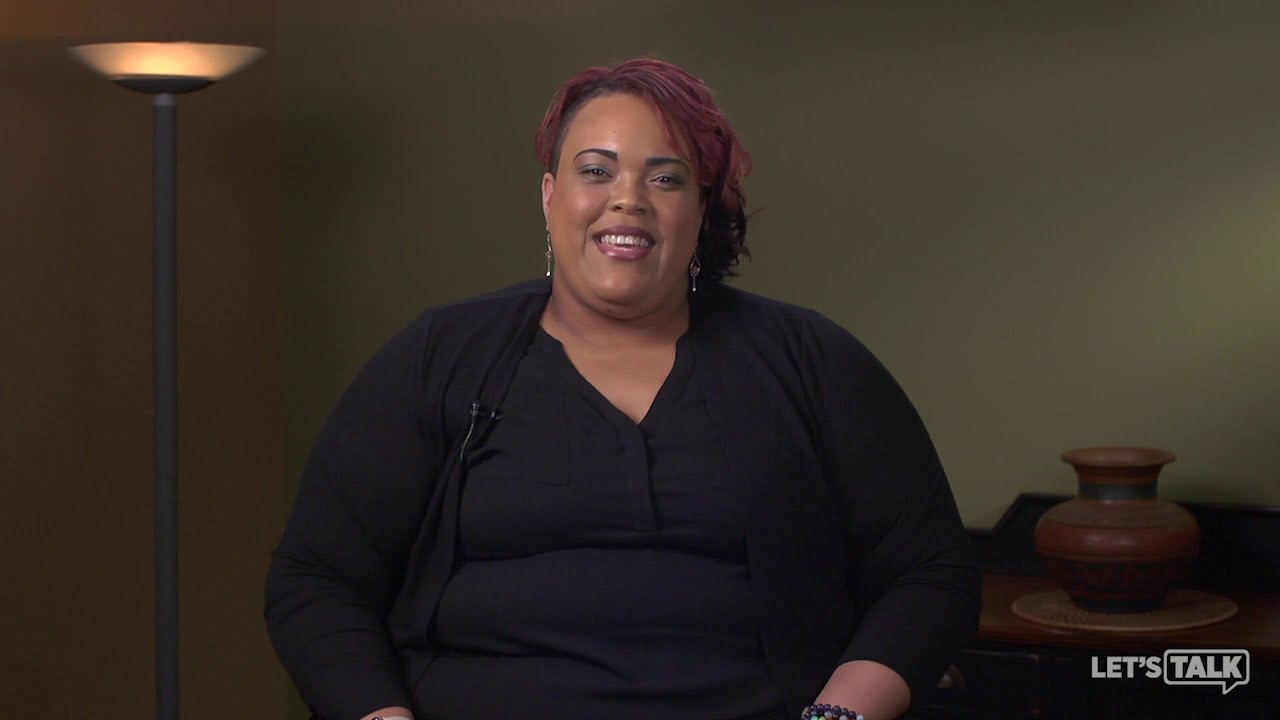
What are some challenges that LGBTQ individuals face in terms of addiction?
LGBTQ individuals often deal with additional stress from discrimination, sexism, and violence. On top of these pressures, many lack access to needed support and resources, making it harder to maintain good mental health, which can lead to a higher risk of addiction.
What are the struggles of LGBTQ?
Struggles for those in the LGBTQ community include facing higher rates of discrimination, bullying, and violence. These issues, along with the fear of coming out and potential rejection, contribute significantly to mental and emotional stress.
How to reduce the stigma of LGBTQ community?
Reducing stigma against the LGBTQ community involves both individual and structural approaches. This includes advocating for policy changes, investing in social norm campaigns, enhancing education, providing opportunities for personal interactions, and bolstering resilience among LGBTQ individuals.
What is the main problem of addiction?
The main problem of addiction is that it creates a dependency on substances that can severely impact a person’s physical, emotional, and social well-being, leading to a downward spiral that’s tough to escape without help.
What are the challenges of queer theory?
Challenges of queer theory include its complex terminology and concepts, which can be difficult for some people to understand and apply, as well as the ongoing struggle to gain acceptance and legitimacy in broader academic and social circles.
What are the stressors of LGBTQ?
Stressors for LGBTQ individuals include experiencing discrimination, rejection from family and friends, internalized homophobia, and a lack of supportive networks, all of which can severely impact their mental health and stability.
What does LGBTQIA2S+ mean?
LGBTQIA2S+ stands for Lesbian, Gay, Bisexual, Transgender, Queer or Questioning, Intersex, Asexual, and Two-Spirit, with the plus sign indicating inclusivity of other sexual orientations and gender identities.
What are the barriers to LGBTQ mental health care?
Barriers to LGBTQ mental health care include a lack of culturally competent providers, fear of discrimination or judgment from healthcare professionals, limited access to LGBTQ-specific resources, and possible financial constraints.
What does IA+ mean in LGBTQIA+?
IA+ in LGBTQIA+ refers to Intersex and Asexual, with the plus sign acknowledging the spectrum of other identities that may not be explicitly listed but are still part of the community.
How to improve LGBTQ mental health?
Improving LGBTQ mental health can be achieved by increasing access to affirming and competent mental health care providers, creating supportive environments, offering tailored mental health resources, and reducing societal stigma through education and advocacy.
What is the objective of the LGBT?
The objective of the LGBT community generally focuses on achieving equality, acceptance, and rights recognition for individuals regardless of their sexual orientation or gender identity, while also creating supportive spaces and reducing stigma.
What are the challenges faced by drug addicts?
Challenges faced by drug addicts include dealing with the physical and psychological dependency on substances, facing stigma and discrimination, and navigating the often complex and challenging path to recovery and finding support systems.
What are some of the challenges in treating addiction disorders?
Treating addiction disorders can be challenging due to the high potential for relapse, the need for personalized treatment plans, addressing any underlying mental health issues, and navigating the stigma associated with addiction.
What are three social problems that are caused by substance abuse?
Three social problems caused by substance abuse include increased crime rates, strain on the healthcare system, and the breakdown of families and communities due to the destructive behaviors associated with addiction.
Do LGBT individuals have the same rates of abuse of drugs and alcohol?
LGBT individuals often have higher rates of drug and alcohol abuse compared to their heterosexual and cisgender peers, largely due to the additional stressors such as discrimination and lack of support systems they face.



